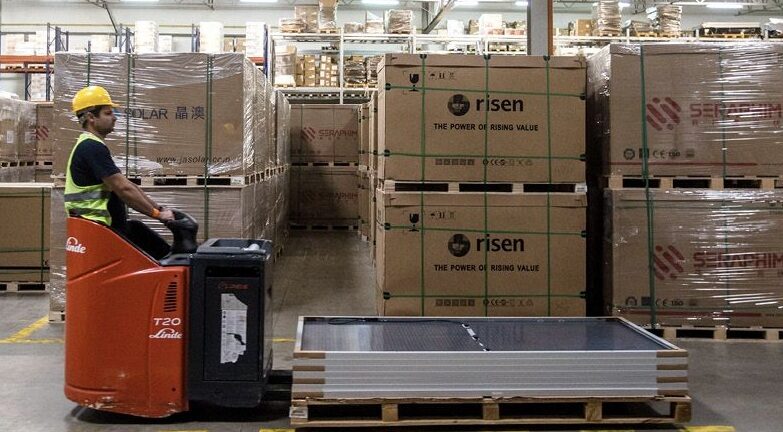Researchers at the Hamad Bin Khalifa University (HBKU) in Qatar have conducted an assessment of the degradation of polyamide (PA) and polyethylene terephthalate (PET) backsheets used in PV modules installed in desert climates, where solar irradiance and ultraviolet (UV) irradiance are approximately 50% higher compared to non-desert environments.
The analysis focused on backsheet crack initiation, propagation, chalking, and delamination. “In this study, extensive investigation of PA and PET chalking powder has been carried out to get a better understanding of the failure mechanism and the powder composition,” the researchers specified.
The tests were carried out at HBKU's Outdoor Test Facility (OTF) in Doha, where in summer months the monthly average ambient temperature is 31 C, the average module temperature is 38 C, and relative humidity (RH) is around 50%, while in winter months these values are 40 C, 70 C, and 65%, respectively.
“Further, at the OTF, a high surface albedo of 40% was measured,” the group explained. “This high albedo value is expected to enhance the UV irradiance received on the PV module backsheet due to multiple scattering of the reflected irradiance.”
Ground-mounted irradiance sensors were used to measure solar irradiance, ambient air temperature, and relative humidity. The PV system included two types of co-extruded PA-based backsheets, called PA1 and PA2, and two types of PET-based backsheets, labeled PET1 and PET2. Through a scanning electron microscope (SEM) and energy-dispersive X-ray spectroscopy (EDS), the group analyzed powder collected from degraded backsheets.
The analysis showed that the main driving “forces” leading to backsheet failure were the combination of high operating temperature, thermal cycling, relative humidity, and prolonged exposure to UV radiation.
It also showed that all 48 PV modules with PET-1 and 8 modules with PET-2 showed backsheet degradation, with the PET-1 samples presenting crack propagation and a high crack density and PET-2 samples showing only chalking without backsheet cracking. “The elevated temperature measured at the junction box was found to increase the yellowness of the PET-1 backsheet resulting in the loss of tensile strength of the backsheet material,” the academics explained.
They also found that the PA backsheets had green spots consisting of antlerite, which is a greenish hydrous copper sulfate mineral, and said the presence was due to the reaction of the PA-1 chalking powder with the solar cell interconnections.
Their findings are available in the study “Degradation of photovoltaic module backsheet materials in desert climate,” published in Solar Energy Materials and Solar Cells.
This content is protected by copyright and may not be reused. If you want to cooperate with us and would like to reuse some of our content, please contact: editors@pv-magazine.com.




By submitting this form you agree to pv magazine using your data for the purposes of publishing your comment.
Your personal data will only be disclosed or otherwise transmitted to third parties for the purposes of spam filtering or if this is necessary for technical maintenance of the website. Any other transfer to third parties will not take place unless this is justified on the basis of applicable data protection regulations or if pv magazine is legally obliged to do so.
You may revoke this consent at any time with effect for the future, in which case your personal data will be deleted immediately. Otherwise, your data will be deleted if pv magazine has processed your request or the purpose of data storage is fulfilled.
Further information on data privacy can be found in our Data Protection Policy.